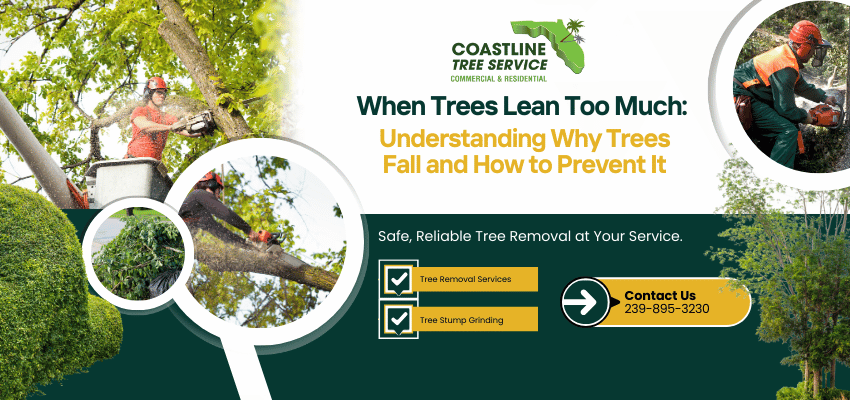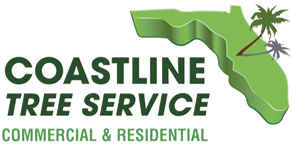
When Trees Lean Too Much: Understanding Why Trees Fall and How to Prevent It
Trees are a vital part of our environment, adding beauty to our landscapes and providing shade, fresh air, and a habitat for wildlife. But they also come with responsibilities. A leaning tree isn’t just an eyesore—it can signal a hidden danger. Whether it’s threatening your property or presenting safety risks to people nearby, understanding why trees become unstable and taking early action is crucial.
What Causes Trees to Fall?
Leaning or fallen trees rarely happen by chance. Instead, it’s often a combination of environmental stressors and root or structural issues. Let’s break down some of the key factors that contribute to tree instability:
1. Root Damage
The health of a tree begins underground. Damaged or severed roots can significantly weaken the stability of a tree. Construction activities, heavy foot traffic, or even digging too close to a tree can harm its root system. Over time, this leads to reduced support, causing the tree to lean or fall.
2. Soil Erosion
Trees rely heavily on the surrounding soil for anchorage. When soil erodes due to heavy rain, flooding, or poor drainage, the roots lose their grip, making the tree unstable. Sloping landscapes or areas near water are especially prone to erosion, increasing the likelihood of toppling trees.
3. Heavy Winds and Storms
Severe weather events, like storms or hurricanes, put trees under intense pressure. Their branches and trunks struggle to withstand the force, especially if the tree isn’t in optimal health. A strong gust can uproot weak trees, turning them into hazards in seconds.
4. Weight Imbalances
Trees with uneven growth or overgrown branches on one side can develop a noticeable lean. This imbalance increases the stress on the trunk and roots, impacting stability over time.
Proactive Monitoring to Prevent Accidents
The best way to avoid emergencies is to catch warning signs before they escalate. Here are a few tips to proactively monitor your trees and keep them safe:
Inspect Root Systems
Look for exposed, broken, or rotting roots regularly. If you notice roots sticking out of the ground with missing bark or discoloration, it’s a sign of trouble.
Check Soil Conditions
Healthy soil is essential for tree support. Watch for cracks or shifting soil around the base of your trees, especially after heavy rains. Compacted soil can also hinder root growth, weakening the tree’s foundation over time.
Observe the Angle
A slight lean isn’t always cause for alarm, but if the angle becomes more pronounced over time, it’s a red flag. This could mean the roots are struggling to anchor the tree properly, and immediate action is needed.
Prune Overgrown Branches
Heavy, unbalanced branches put stress on the tree. Regular pruning helps distribute the weight, reducing strain and preventing unnecessary leaning.
Keep an Eye on Pests and Diseases
Diseases and pests can weaken a tree from the inside out. Unchecked infections can hollow out trunks, rot roots, or kill branches, increasing the risk of collapse.
Partner with Coastline Tree Service for Reliable Help
At Coastline Tree Service, we understand how important your trees are to you—and how dangerous it can be if they’re not properly cared for. While inspecting trees may seem straightforward, diagnosing underlying instability and handling corrective measures is a job that requires expertise, specialized tools, and safety knowledge. Attempting to fix leaning trees or prune branches on your own could lead to severe injuries or costly property damage.
Our team of certified arborists is here to make the process safe, seamless, and effective. We’ll assess your trees for hidden risks, provide preventative care recommendations, and perform necessary interventions to keep your landscape safe and thriving.
Don’t wait for a problem to grow out of control. If a tree in your yard is leaning, call in the professionals to restore balance—both to the tree and your peace of mind. Partnering with Coastline Tree Service means you’re working with a trusted tree care expert. We proudly serve and offer Tree Removal Services in Naples, Marco Island, Bonita Springs, Estero, Fort Myers, Fort Myers Beach, North Fort Myers, Cape Coral, Sanibel & Punta Gorda.
Contact Coastline Tree Service today at: (239) 895-3230 or contact us online at: https://www.coastlinetree.com/contact-us/ to schedule an inspection and protect your property for years to come!
